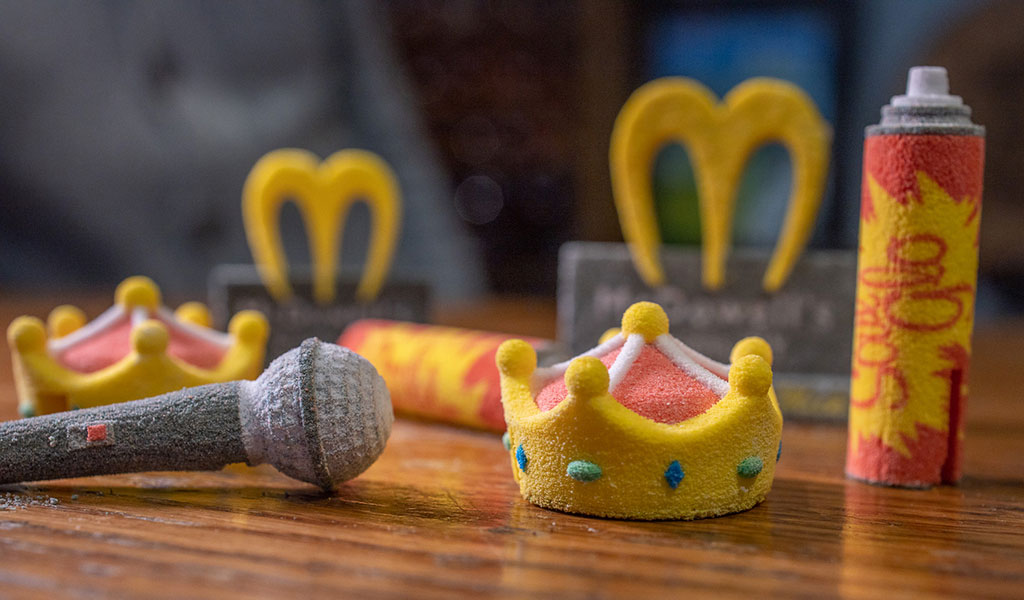Since its invention was made public in 2013, the candy 3D printing technology has been wowing onlookers with its ability to create not only complex, geometrically intricate, full-colour objects, but also objects that taste as sweet as they look. However, the technology had a bumpy ride, being acquired by 3D Systems that same year, then quietly shelved until it was adopted again by American baking ingredient manufacturer Brill Inc. Now, just as Brill has experienced its own company journey, 3D printed confectionery technology is back in the hands of its inventor Kyle von Hasseln.
Currant 3D buys back food 3D printing technology
19 October 2022, Antarctic Bear has learned that von Hasseln, together with Currant 3D co-founder Meagan Bozeman, has bought back the technology under the Currant 3D brand. This will allow the California-based company to continue 3D printing food products, as well as selling printers and consumables. The company acquired the technology from investors in May 2022 for $5 million, and Currant 3D’s post-investment assessment was $16 million, with the aim of scaling up the business.
Bozeman explained the investment strategy to Tech Crunch: “After Kyle developed his culinary 3D printer, it was quickly acquired by 3D Systems, where he and I teamed up to create and run the culinary technology division, building the CURRANT 3D printer from the ground up. We left 3D Systems in 2019 to start our company, backed by our investment group, and quickly became the largest buyer of 3D printing technology. When the opportunity to acquire the technology arose this year, we returned to our investor network, which was extremely supportive and raised the funds to fully acquire the CURRANT 3D printer platform. We are very proud and grateful to have this technology back in the hands of the original inventors and advocates. This puts us in full control of our future, and we will be able to 3D print food even faster in the future.”
Currant 3D’s technology was originally developed by von Hasseln and his wife Liz in 2013 under the banner of boutique food 3D printing company Sugar Lab. A form of adhesive jetting, the process jets water onto a dehydrated food powder or powdered bed of sugar to produce a three-dimensional part. Using food-safe ingredients, these prints can be made into vibrant, full-colour palettes. In addition, a variety of flavourings can be added to create novel taste experiences.
The “road to redemption” for 3D printing of sweets with a twist
The company was acquired by 3D Systems under the largesse of former CEO Avi Reichental. Like many of the companies purchased at the time, it had great promise, but was not fully commercialised. That is, until 2019, when 3D Systems entered into an agreement with Brill to market the technology. As of 2020, Brill Culinary Studio is still “powered by 3D Systems”, but that tagline is dropped until at least March 2021. It is unclear from the SEC filing when 3D Systems will offload the assets associated with its culinary 3D printing division. Brill continued to market the machine on its website until 27 February 2022, just before the deal sold it back to its inventor.
Brill itself is going through some changes that may have led it to drop this unique technology from its portfolio. founded in 1928, Brill was acquired by CSM Ingredients in 2018, which may explain its involvement in 3D printed food next year. However, before Brill could put the technology into practice, it was acquired by Rise Baking Company, which in turn was owned by Olympus Partners.
All of this is to say that the food ingredients business may be experiencing some turbulence at the moment, possibly due to supply chain issues. We are already seeing the supply of products such as grains being negatively impacted by a number of factors, including drought due to global warming and the war in Ukraine. This in turn has had a knock-on effect on global food and the economy.
Taking a new leap forward in confectionery 3D printing technology
Currant 3D now has what is likely to be the only commercial-scale 3D printer to have received NSF certification. From the looks of the company’s website, it is ready to go beyond sugar, which may be Brill’s limiting factor for the technology. According to the Currant 3D website, although the technology is primarily used to showcase sugar-based products, any powdered food can be printed, including “dehydrated fruits, vegetables, mushrooms, vegetable proteins, flours or spices”.
This opens up even greater possibilities for Currant 3D – and just in time. While powdered food 3D printing has wilted under the ownership of 3D Systems and Brill, 3D printed plant and animal proteins are starting to take off. There is no doubt that the Currant 3D team has been following these trends and developing their own products behind closed doors. It is difficult to determine how powdered plant proteins will affect the delicious final product. We know that Sugar Lab offers 3D printed nuggets, but the possibilities could expand further.

